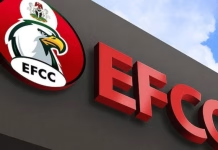The pressure on the money market exacerbated in the absence of major inflows from maturing instruments and various borrowing instruments. This kept financial markets tight on liquidity, and in order to allocate resources properly, rates rose beyond 33%.
The short-term benchmark interest rate, which often influences returns on mutual funds and other money market accounts, is projected to remain high.
Investment firms claimed that interbank rates rose higher when the financing level or liquidity balance in the financial system deteriorated.
Analysts claimed that the latest tightening has maintained short-term benchmark interest rates higher, as opposed to the previous position witnessed in late September.
Due to weak funding level, transaction at the money market environment were conducted at higher rates while cash rich local banks request higher rates.
According to AIICO Capital Limited, system liquidity opened significantly lower on Thursday while analysts at the firm said most participants relied on the Standing Lending Facility of the Central Bank of Nigeria to fund their operations.
This happed as the apex bank also conducted OMO auction which analysts had projected will put further pressure on funding level.
The funding pressure spurred by OMO auction on Thursday nudged interbank rates closed higher. Specifically, the Open Repo Rate (OPR) and the Overnight Rate (O/N) increased by 4.01% and 3.81% to 32.98% and 33.68%, respectively.
Nigerian interbank offered rate (NIBOR) rose across all maturities, with banks holding reserves aiming to capitalize on higher rates, analysts at Cowry Asset Limited said in a note.













